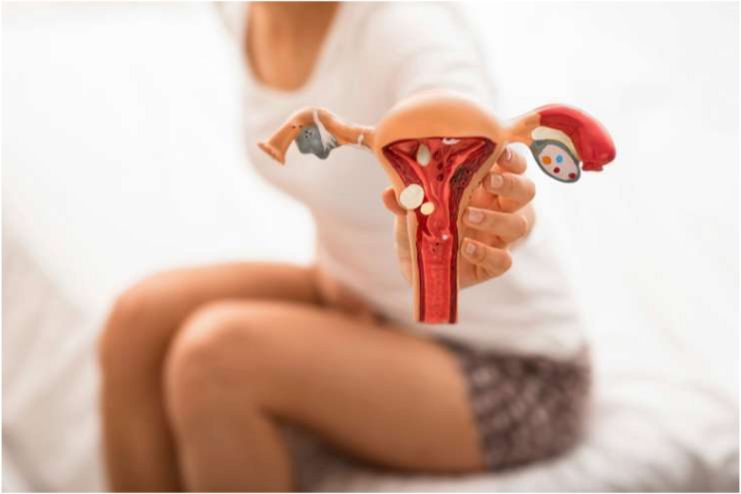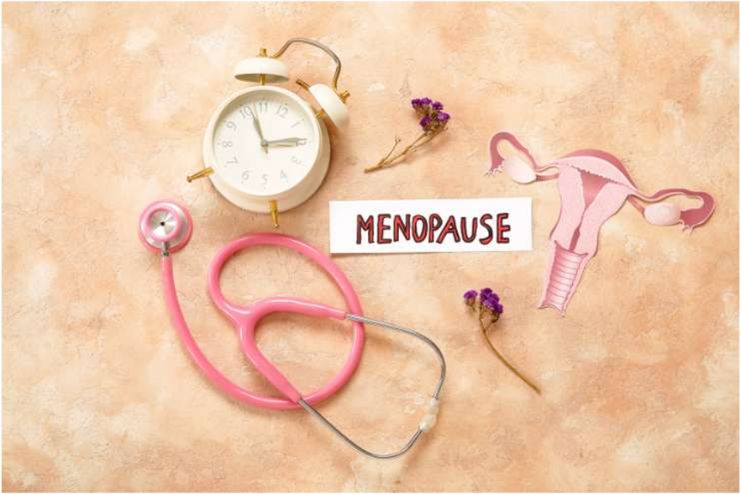Affiliate Disclaimer
Some links in this article are affiliate links. We may earn a small commission if you make a purchase through these links, at no extra cost to you. We only recommend products we find useful to our readersHormonal fluctuations are a significant factor in women’s distinctive path through various life phases. These variations have a considerable impact on one’s physical, emotional, and mental health from youth until menopause. Women must comprehend the importance of hormonal changes to appropriately manage their health’s complexity. By highlighting the transforming power of hormones and the importance of women understanding these changes, this piece seeks to set the tone. Women empowered with knowledge are more equipped to make decisions to improve their general health and well-being. Come along on this illuminating journey as we explore the complexities of hormone swings, giving women a compass to help them navigate the waters of their evolving bodies.
Hormonal Changes in Adolescence
Puberty and Adolescence

For both boys and girls, puberty is a transforming stage that heralds the beginning of sexual maturity and the introduction of notable hormonal changes. Girls’ secondary sexual traits develop as a result of hormonal changes brought on by puberty. The chemicals known as teenage hormones are responsible for the physical and sexual development that adolescent people will experience far into adulthood.
Parents will observe that their adolescent child develops more extraordinary emotions, moods, and sexual desires as these chemicals take control of the teen’s body. Growth spurts, weight increases, and mood fluctuations are likely to occur.
Your hormones alter not just the external appearance of your body but also your inside feelings. Your mind is adjusting to all the new hormones simultaneously with your body. You may experience confusion or intense feelings during puberty that you have never experienced before. You can experience anxiety due to the way your body is changing. You may share increased feelings of agitation or irritability.
Along with physical changes, including male and female pubic hair development (pubarche), female breast development (thelarche), male genital changes, voice changes, height gain, and the start of menstruation (menarche), puberty is also linked to emotional and chemical changes—the five phases of puberty, known as Tanner stages, span from prepubertal to full adulthood.
Girls may endure typical health difficulties as they go through the hormonal ups and downs of puberty. Hormonal variations can cause menstrual irregularities, such as heavy periods or irregular cycles. Emotional changes are also common at this period, ranging from mood swings to greater sensitivity.
Menstruation health is more than just the absence of menstruation issues; it can also be characterized as a condition of whole physical, mental, and social well-being. It is necessary to accomplish sustainable development goals and enhance public health globally. Adolescent girls frequently experience psychosocial issues when they are menstruating. Their social lives, academic performance, and school attendance are all impacted by menstrual issues. Menstrual problems are primarily physical and dynamic. Few studies have examined the psychosocial elements of menstruation, even though numerous studies have documented the physical issues teenage females endure during the period.
Reproductive Years and Fertility
Young Adulthood

The menstrual cycle, which occurs regularly, indicates that women’s reproductive systems are entering a phase of increased activity as they approach young adulthood. Maintaining reproductive health and fertility during this time requires understanding the complex interactions between hormones.
The menstrual cycle, a defining feature of reproductive years, is controlled by a complex hormonal dance. The cycle, which lasts an average of 28 days, is caused by the ovaries releasing progesterone and estrogen.
Throughout the menstrual cycle, estrogen levels rise and fall twice. In the mid-follicular phase, estrogen levels rise, sharply declining following ovulation. Subsequently, during the mid-luteal phase, there is a spike in estrogen levels, which eventually decreases at the end of the menstrual cycle. The rise in serum progesterone corresponds with the secondary increase in estradiol. Studies on ovarian veins verify that steroid synthesis occurs in the corpus luteum during the luteal phase. The many stages of the menstrual cycle, from menstruation to ovulation, are controlled by the rise and fall of these hormones.
An important factor in fertility is hormonal balance, which affects a woman’s capacity to become pregnant. Ovulation is the time of the menstrual cycle when an immature egg that is ready for fertilization is released from the ovary. Hormonal imbalances can affect fertility. Examples include inconsistencies in the release of eggs or insufficient amounts of vital hormones. Reproductive potential may be impacted by conditions such as endometriosis and polycystic ovarian syndrome (PCOS), which are prominent examples of disorders that can upset hormonal balance.
Hormonal imbalances caused by polycystic ovary syndrome, which is typified by irregular menstrual periods and ovarian cysts, might impede ovulation. Contrarily, endometriosis results in the formation of tissue outside the uterus, which can lead to abnormal hormone levels and even difficulties with conception.
While both endometriosis and PCOS can lead to infertility and impair female reproduction, they differ significantly from one another.
Hormone issues create PCOS, but aberrant cell development outside the uterus causes endometriosis. Both need to be managed medically, but coordinated care is especially important for PCOS patients because it is a hormonal illness that affects several body systems.
According to Dr. Appelbaum, working closely with other doctors besides a gynecologist can be beneficial for patients with PCOS. For instance, your gynecologist, an endocrinologist, a dermatologist, and a licensed dietician should collaborate to create a care plan.
Both PCOS and endometriosis necessitate continuous care, frequently including medication. However, depending on whether a woman is actively attempting to conceive, these illnesses are treated differently. Teens with endometriosis or PCOS may have symptoms that differ from those of adults, making diagnosis more difficult.
Hormonal Shifts in Maternity and Postpartum
Pregnancy and Postpartum

Hormonal changes during pregnancy and postpartum are part of the transforming experience of becoming a mother. As they manage the complexities of this unique stage of their life, pregnant and new mothers must thoroughly understand these variations.
Significant hormonal changes occur throughout pregnancy to promote the unborn child’s growth and development. One of the earliest hormones to rise, human chorionic gonadotropin (hCG), sometimes known as the pregnancy hormone, instructs the body to preserve the uterine lining.
This hormone is produced only during pregnancy. The placenta is its primary source. During the first trimester, the mother’s blood and urine contain much higher quantities of the hormone HCG, which might contribute to frequent pregnancy-related nausea and vomiting.
Your hCG levels will climb quickly during pregnancy, doubling every few days until they peak during the first eight to eleven weeks. Doug Wilson, the chief of the obstetrics and gynecology department at Foothills Medical Centre in Calgary, believes this hormone is significant because elevated levels signify the beginning of the placenta.
Progesterone and estrogen are two more hormones necessary for a successful pregnancy. They are created in the ovaries, and throughout the menstrual cycle, their concentration changes. They aid in getting the uterus ready for childbearing. You will experience elevated amounts of both hormones during your pregnancy. Relaxin is another significant hormone at work. Your ovary produces this protein hormone during pregnancy, which causes your pelvis to relax in preparation for giving birth.
The body experiences additional hormonal changes during childbirth as it adjusts to the new situation. When estrogen and progesterone levels fall sharply, prolactin, the hormone that starts lactation, is released. Breast milk production depends on this hormonal shift and gives the baby the nutrition it needs to survive.
It makes sense that your energy, moods, and emotions would feel erratic after giving birth—high prolactin production, no progesterone, possibly decreased dopamine, and a decline in your other pregnancy hormones! After giving delivery, many new mothers suffer from the baby blues, which are frequently characterized by emotions of worry and depression.
Women may experience extreme emotions at different times, such as happiness, sadness, or feeling overwhelmed. Even though baby blues are thought to be a normal consequence of the hormonal changes that take place during and after pregnancy, 10% of women who experience them may go on to experience severe, protracted depression. Postpartum depression can start as early as the day before you give birth and as late as a year after your baby is born.
Menopause and Beyond
Menopause and Aging

A woman’s journey into menopause, which signifies the end of her reproductive years and the beginning of the hormonal changes that come with aging, is a momentous occasion in her life. Navigating this natural stage requires an understanding of these changes and the adoption of healthy aging measures.
Menopause, which denotes the end of menstrual cycles, usually strikes a woman in her late 40s or early 50s. This biological transition is mainly caused by the ovaries producing fewer hormones, especially progesterone and estrogen.
A woman enters menopause twelve months following her last menstrual cycle. The menopausal transition, also known as perimenopause, is the period before that happens when women may have hot flashes, irregular monthly cycles, or other symptoms.
Most typically, the onset of menopause occurs between the ages of 45 and 55. Though it can continue up to 14 years, it typically lasts seven years. The length of time may vary depending on lifestyle choices like smoking, age at onset, and race/ethnicity. During perimenopause, the body produces different amounts of the hormones progesterone and estrogen produced by the ovaries. Every woman experiences the menopausal transition differently and in various ways. Women may gain weight more efficiently, and their bodies start to use energy differently and in other ways in fat cells. Your physical function, body composition, shape, or heart or bones may all change.
Despite the widespread belief that menopause may have a detrimental impact on mental health, several studies have shown that menopausal women have no more levels of stress, anxiety, sadness, rage, or uneasiness than women of the same age who are still menstruating. Fatigue, irritability, insomnia, and anxiousness are psychological and emotional symptoms that can be linked to age, changing roles, and estrogen deficiency.
A comprehensive approach to healthy aging entails tackling menopause’s problems and advancing general well-being. One way to manage menopausal symptoms is to change one’s lifestyle to support bone health and maintain a balanced diet high in calcium and vitamin D. Frequent exercise improves cardiovascular health, easing mood swings and weight gain symptoms.
During this time of transition, mind-body techniques like yoga and meditation can help manage stress and foster emotional resilience. Consulting with medical experts can also offer alternatives for therapies customized to meet a person’s health needs, such as hormone replacement therapy.
Your nutritional needs alter as you get older. You should consume roughly 1,000 mg of calcium per day before menopause. You should consume up to 1,200 mg of calcium daily after menopause. After menopause, a lot of women gain weight. The reason for this could be a decrease in estrogen levels. Increasing your level of activity can help you prevent this weight gain.
Frequent exercise helps control weight, strengthens the heart and bones, and lifts spirits. Osteoporosis, diabetes, high blood pressure, obesity, heart disease, and other conditions are more common in women who do not engage in physical activity. Sedentary women may also experience sadness, weak muscles, poor circulation, sleeplessness, and persistent back pain.
Conclusion
The hormonal journey is a dynamic and changing process for women during different life phases. Hormones are a significant factor in determining an individual’s physical, emotional, and mental health, from the start of puberty to the major life transitions of pregnancy, childbirth, and menopause. Comprehending these variations is essential for enabling women to make knowledgeable decisions regarding their well-being.
This investigation has brought attention to the subtleties of hormone fluctuations, highlighting their significant influence. Recapitulating the path through youth, young adulthood, pregnancy, and beyond makes it clear that understanding the intricacies of hormonal changes can help one navigate them effectively. Let’s encourage women to embrace their hormonal journey with understanding and confidence as we come to an end.
They should do this by making educated decisions and getting the help and medical attention they need. Empowered women can take control of their hormonal journey and promote long-term health and well-being.
References
- https://www.ncbi.nlm.nih.gov/books/NBK534827
- https://kidshealth.org/en/teens/puberty.html
- https://www.newportacademy.com/resources/empowering-teens/teenage-hormones-and-sexuality
- https://www.ncbi.nlm.nih.gov/pmc/articles/PMC9202820
- https://www.ncbi.nlm.nih.gov/pmc/articles/PMC10466533
- https://www.ncbi.nlm.nih.gov/books/NBK279054
- https://www.hackensackmeridianhealth.org/en/healthu/2021/08/10/pcos-vs-endometriosis-whats-the-difference
- https://my.clevelandclinic.org/health/diseases/8316-polycystic-ovary-syndrome-pcos
- https://www.hopkinsmedicine.org/health/conditions-and-diseases/staying-healthy-during-pregnancy/hormones-during-pregnancy
- https://www.todaysparent.com/pregnancy/pregnancy-health/how-pregnancy-hormones-affect-your-body-in-each-trimester
- https://www.yourhormones.info/topical-issues/hormones-of-pregnancy-and-labour
- https://www.medela.us/breastfeeding/articles/postpartum-hormonal-changes-how-they-affect-you
- https://www.nia.nih.gov/health/menopause/what-menopause
- https://www.hopkinsmedicine.org/health/conditions-and-diseases/introduction-to-menopause
- https://www.mayoclinic.org/diseases-conditions/menopause/symptoms-causes/syc-20353397
- https://www.hopkinsmedicine.org/health/conditions-and-diseases/staying-healthy-after-menopause
- https://www.mayoclinic.org/diseases-conditions/menopause/diagnosis-treatment/drc-20353401
In this Article

















